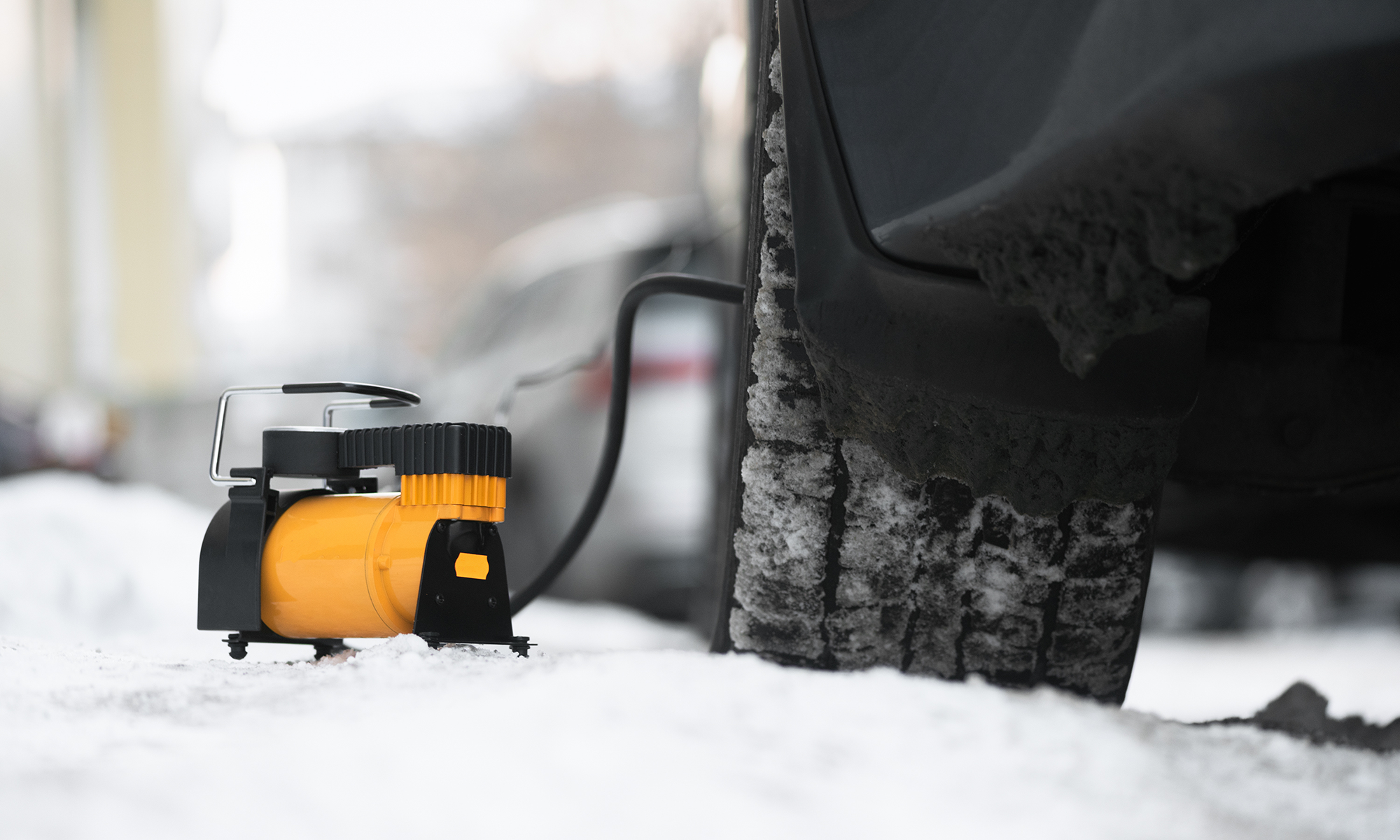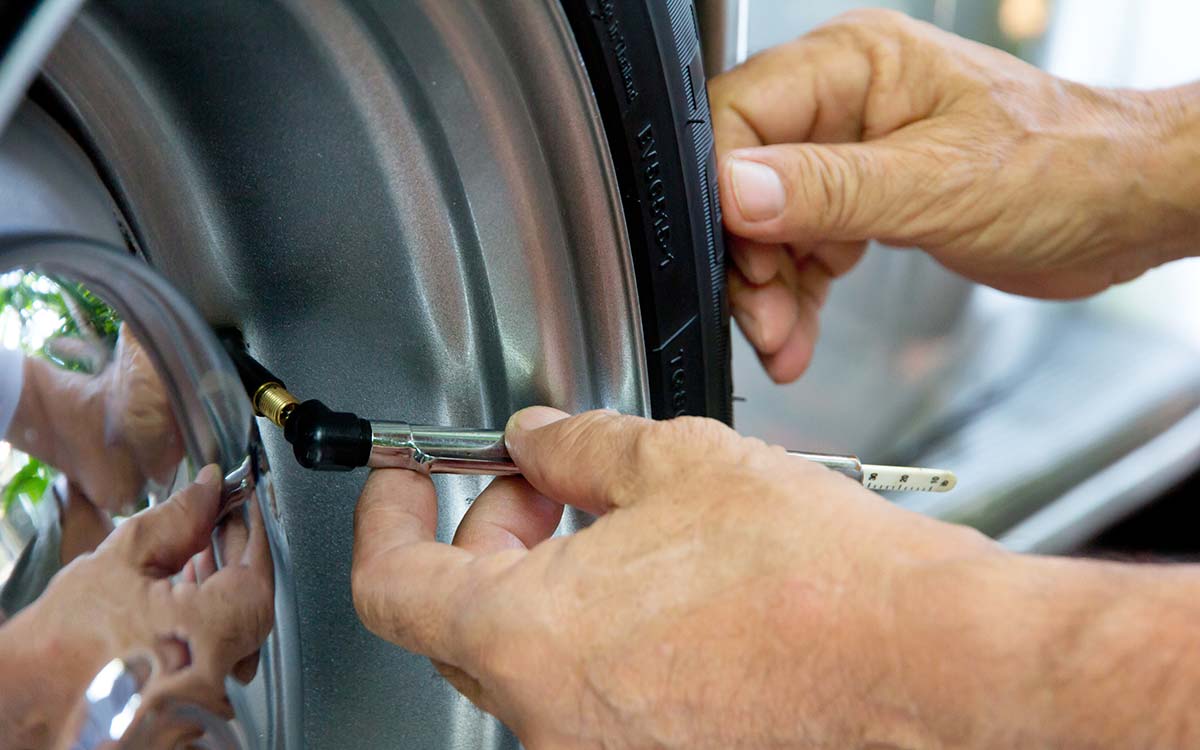¡Consigue esta oferta! Llama ahora.
Hable con un especialista en planes de protección de vehículos y obtenga $300 apagado cualquier nuevo contrato al instante.
Llamar 866-678-4172
o escanea el código a continuación


Con los meses de invierno en pleno apogeo, los conductores de todo el país se enfrentan a nieve, aguanieve, hielo, lluvia y (por supuesto) clima frío, todo lo cual combinado puede hacer Conducir es muy peligroso, especialmente si tu El vehículo no está listo para este tipo de clima. Afortunadamente, ya sea un auto nuevo o un auto usado confiable, mantenerse al día con su programa de mantenimiento de rutina puede ayudar a que su vehículo funcione de manera óptima durante todo el año, especialmente en invierno. De hecho, hay precauciones especiales que debe tomar en invierno, como asegurarse de Los fluidos de su vehículo El coche está en perfecto estado, el motor está en perfecto estado de funcionamiento, etc. Pero los propietarios de coches suelen olvidar una tarea de mantenimiento invernal esencial: comprobar la presión de los neumáticos.
Hoy veremos cómo se mide la presión de los neumáticos. Afectado por el clima más frío y cómo puedes mantener tus neumáticos para mantenerte seguro durante los meses de invierno.
¿Alguna vez has salido a tu vehículo en invierno y has notado que tus neumáticos parecían desinflados? Tal vez incluso hayas visto la luz de baja presión de los neumáticos, también conocida como luz del TPMS (sistema de control de presión de los neumáticos), encendida Tu tablero de mandosSi esto parece suceder todos los inviernos, no está solo. La temperatura del aire exterior refleja directamente la presión de los neumáticos de su vehículo, pero ¿qué causa esto?
Cuando la temperatura baja, las moléculas de aire de los neumáticos de tu coche empiezan a contraerse, lo que provoca un cambio temporal de presión. Más concretamente, por cada 10 grados que baje la temperatura, la presión de los neumáticos disminuirá aproximadamente 1-2 PSI (libras por pulgada cuadrada)Lo mismo ocurre con las temperaturas más altas en verano. Cuando la temperatura aumenta, las moléculas de aire se expanden. De hecho, por cada 10 grados más de temperatura, se puede observar un aumento de 1 a 2 PSI en la presión de los neumáticos.
Durante el invierno, si bien es posible que notes que la luz del TPMS se enciende cuando te subes al auto, después de conducir un rato, es posible que notes que se apaga a medida que los neumáticos del auto y el aire en el interior se calientan debido a la fricción con la carretera y se nivelan nuevamente. Si vives en una zona con inviernos más duros, la presión de los neumáticos no se nivela después de conducir y la luz del TPMS permanece encendida, deberás agregar aire para volver a la presión recomendada. Controlar la presión de aire de los neumáticos semanalmente puede ayudar a prevenir que los neumáticos estén desinflados sin importar en qué estación te encuentres.
Cada fabricante de vehículos describe el presión recomendada en el el manual del propietario para que coincidan con las ruedas y los neumáticos de fábrica. Si tiene neumáticos de repuesto, puede encontrar el presión recomendada en el pared lateral de los neumáticos. Independientemente de quién haya fabricado sus neumáticos, mantenerlos PSI recomendado es vital para mantener su vehículo funcionando al máximo rendimiento y evitar otros problemas que Baja presión de los neumáticos puede causar.
Recuerde, cuando el cambios de temperatura, su presión de llanta puede caer más bajo que el nivel recomendado, dejándote más propenso a los siguientes problemas:
Cuando se trata de la meses de inviernoHay algunos consejos de mantenimiento preventivo que puede seguir para garantizar que sus neumáticos estén listos para el clima más frío.
Echemos un vistazo a algunos de los principales consejos de mantenimiento invernal para neumáticos:

Una de las formas más rápidas y sencillas de realizar el mantenimiento de los neumáticos durante el invierno es comprobar periódicamente la presión de los neumáticos. presión del aire Le ayudará a mantener sus neumáticos en el estado recomendado. presión del aire niveles. Mantener un manómetro de presión de neumáticos en su vehículo le permitirá verificar su presión de llanta y obtener una lectura precisa En cualquier momento, si su neumático parece un poco desinflado mientras está en la calle. La mayoría de las gasolineras tienen presión del aire máquinas que facilitan el llenado de neumáticos.
La banda de rodadura de sus neumáticos puede decirle mucho sobre el rendimiento de su vehículo, y saber qué buscar puede ayudarle a anticiparse a las reparaciones más importantes que su automóvil pueda necesitar. Si la banda de rodadura de sus neumáticos está desgastada de manera anormal, deberá hacer que un profesional inspeccione su automóvil para determinar cuál es el problema.
Puede utilizar la siguiente guía como referencia para delimitar su problema:
No todos los neumáticos son iguales; algunos están diseñados para condiciones de conducción específicas. Dado que los meses más fríos traen consigo una serie de condiciones climáticas peligrosas, muchos fabricantes de neumáticos ofrecen Neumáticos de invierno (también conocidos como neumáticos para nieve) para una mayor seguridad y rendimiento en nieve, hielo y lluvia en comparación con los neumáticos de alto rendimiento o para todas las estaciones.
Los neumáticos de invierno ofrecen diferentes compuestos de caucho, patrones de banda de rodadura y bordes de agarre para brindarle un mejor agarre en estas condiciones de la carretera. Esto será útil principalmente para aquellos que experimentan nieve frecuente durante el invierno. Aquellos que viven en climas más cálidos, como los estados del sur, pueden optar por cadenas para neumáticos en lugar de Cambio de neumáticosSi cambia a neumáticos de invierno cuando llegan las temperaturas más bajas, podría ayudar a aumentar la vida útil de ambos juegos de neumáticos, ya que se desgastarán menos cuando no estén en uso.
Otra tarea de mantenimiento importante que debes realizar de forma rutinaria es rotando sus llantas. A rotación de neumáticos Esto significa que debes cambiar los neumáticos para moverlos a diferentes rincones de tu auto y asegurarte de que se desgasten de manera uniforme. Esto generalmente implica mover los conjuntos de ruedas y neumáticos de la parte delantera a la trasera en un patrón cruzado. Esto ayuda a que los neumáticos delanteros, que se desgastan más rápido debido al giro, se muevan a la parte trasera para que los neumáticos traseros se desgasten al mismo nivel. Asegurarte de que tus neumáticos se desgasten a los niveles correctos mantendrá tu auto más seguro y te dará un mejor rendimiento durante el invierno.
Inspeccione su suspensión antes de la meses de invierno ayuda a garantizar que los componentes desgastados se reparen con anticipación para minimizar los riesgos de seguridad y el desgaste innecesario de los neumáticos. Los componentes de la suspensión desgastados, como los extremos de la barra de dirección, los bujes, Amortiguadores y puntales Puede provocar que los neumáticos se desgasten de manera desigual y tengan un rendimiento inferior, especialmente en condiciones climáticas adversas. Una inspección de la suspensión puede ayudarle a realizar las reparaciones necesarias antes de que el clima comience a empeorar.
Con la llegada de las temperaturas más frías, es más importante que nunca asegurarse de que la presión de los neumáticos sea la correcta y de que todo el vehículo esté al día con el mantenimiento de rutina. Mantenerse al día con el mantenimiento de su automóvil puede ayudar a reducir las posibilidades de averías inesperadas, pero aún existen ciertas circunstancias en las que podría necesitar una reparación. Como un Plan de protección Endurance galardonadoEl plan de protección de vehículo adecuado puede ayudarle a mantenerse cubierto.
Con Un plan de protección automática EnduranceTendrá tranquilidad con un plan de protección integral para vehículos que se ajuste a su presupuesto. Endurance también ofrece cobertura para vehículos excluidos de la mayoría de las coberturas de garantía extendida o de fábrica, como vehículos de alto kilometraje, vehículos de lujo de alta gama, y más. Cada plan incluye asistencia en carretera gratuita las 24 horas, los 7 días de la semana, remolque, reembolso de alquiler de coche y cobertura por interrupción de viaje, además de un año completo de Beneficios de Endurance Élite, incluidos descuentos por colisión, reparaciones o reemplazos de neumáticos y más.
Proteja su vehículo hoy llamando al equipo de servicio al cliente galardonado al (800) 253-8203 para una cotización GRATIS, o tienda en linea Hoy. Nuestro equipo de servicio al cliente galardonado También está feliz de Responder cualquier pregunta Tienes y te proporcionamos una cotización personalizada Cuando llames al (800) 253-8203, no olvides pasar por el Blog Endurance, donde podrás encontrar otros Comparaciones de garantías extendidas, artículos sobre temas como Consejos para el mantenimiento del coche por uno mismo, Guías de compra de vehículos, respuestas a tus mayores preguntas Preguntas frecuentes sobre garantía extendida y más.

Estamos aquí para asegurarnos de que obtenga la protección EV más completa. Por eso nos hemos asociado con Xcelerate automático para ofrecerle una cobertura Tesla transparente y confiable.
¿Quiere que nos comuniquemos con usted acerca de la cobertura XCare para su Tesla?



¡Llama y obtén un descuento de $300 en cualquier plan nuevo!
Al hacer clic en el botón, acepta que Endurance utilice tecnología automatizada para llamarlo, enviarle un correo electrónico y enviarle mensajes de texto utilizando la información de contacto anterior, incluido su número de teléfono móvil, si se proporciona, con respecto a la protección del automóvil o, en California, el seguro contra averías mecánicas. También acepta el Endurance política de privacidad y Términos y condiciones. El consentimiento no es una condición de compra y puede retirar el consentimiento en cualquier momento. Se pueden aplicar tarifas por mensajes y datos.
Hable con un especialista en planes de protección de vehículos y obtenga $300 apagado cualquier nuevo contrato al instante.
Llamar 866-678-4172
o escanea el código a continuación



Simplemente complete la información a continuación y le daremos seguimiento rápidamente con su cotización gratuita y sin compromiso.
Al hacer clic en el botón, acepta que Endurance utilice tecnología automatizada para llamarlo, enviarle un correo electrónico y enviarle mensajes de texto utilizando la información de contacto anterior, incluido su número de teléfono móvil, si se proporciona, con respecto a la protección del automóvil o, en California, el seguro contra averías mecánicas. También acepta el Endurance política de privacidad y Términos y condiciones. El consentimiento no es una condición de compra y puede retirar el consentimiento en cualquier momento. Se pueden aplicar tarifas por mensajes y datos.

Para hablar con un especialista en planes de protección de vehículos y guardar $300
Escanee el código a continuación
Larry Witherspoon Jr. es cofundador y director ejecutivo de Centro de formación automotriz. Larry ha ocupado múltiples puestos de liderazgo en la Marina de los EE. UU. y en varias empresas Fortune 100. Además de su experiencia empresarial, Larry creció entendiendo las dificultades que todos los jóvenes enfrentan al convertirse en adultos, especialmente aquellos que surgen de circunstancias difíciles. Tomó esas experiencias de niño y las combinó con su pasión por los vehículos para iniciar el Centro de capacitación automotriz. Leer más sobre Larry.